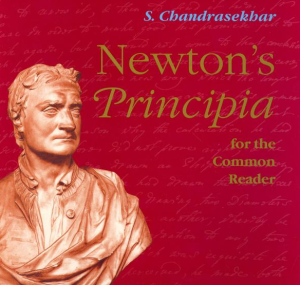
How Basic Math Limits Scientific Discoveries
‘Scientific discovery’ often constitutes of describing natural phenomena using a scientific language. For physical sciences, mathematics is that language of choice. Therefore, if the mathematics of a civilization does not have certain tools in its toolbox, explaining natural phenomena becomes increasingly difficult. In the same vein, when mathematics stops growing, a long dark age follows despite apparent prosperity built on the foundation on previous progress in mathematics.
In an earlier commentary, we talked about how ancient Romans multiplied numbers using their Roman numerals. The process shown in professor Fekete’s page was quite elaborate and possibly created hindrance for further improvement of Roman science. A bigger reason for the lack of progress of Roman science was their general dislike of mathematicians and philosophers. Romans were very practical, who saw mathematicians and philosophers as unproductive people wasting time on abstract concepts. In reality, ancient Greeks greatly expanded the frontier of mathematics (geometry), and that foundation supported giant Roman constructions.
Speaking of mathematics, here is what ancient Greeks discovered and did not discover.
Geometry

Development of geometry was the biggest achievement of ancient Greeks. Greeks saw their world in terms of geometrical figures. So, everything their mathematicians derived were based on such constructs.
Borrowing from wiki -
In the 7th century BC, the Greek mathematician Thales of Miletus used geometry to solve problems such as calculating the height of pyramids and the distance of ships from the shore. He is credited with the first use of deductive reasoning applied to geometry, by deriving four corollaries to Thales’ Theorem.[10] Pythagoras established the Pythagorean School, which is credited with the first proof of the Pythagorean theorem,[11] though the statement of the theorem has a long history[12][13] Eudoxus (408c.355 BC) developed the method of exhaustion, which allowed the calculation of areas and volumes of curvilinear figures,[14] as well as a theory of ratios that avoided the problem of incommensurable magnitudes, which enabled subsequent geometers to make significant advances. Around 300 BC, geometry was revolutionized by Euclid, whose Elements, widely considered the most successful and influential textbook of all time,[15] introduced mathematical rigor through the axiomatic method and is the earliest example of the format still used in mathematics today, that of definition, axiom, theorem, and proof. Although most of the contents of the Elements were already known, Euclid arranged them into a single, coherent logical framework.[16] The Elements was known to all educated people in the West until the middle of the 20th century and its contents are still taught in geometry classes today.[17] Archimedes (c.287212 BC) of Syracuse used the method of exhaustion to calculate the area under the arc of a parabola with the summation of an infinite series, and gave remarkably accurate approximations of Pi.[18] He also studied the spiral bearing his name and obtained formulas for the volumes of surfaces of revolution.
Numbers
Greeks discovered rational numbers (ratio of integers), but chose not to venture into irrational numbers despite being dangerously close.
Greek mathematicians termed this ratio of incommensurable magnitudes alogos, or inexpressible. Hippasus, however, was not lauded for his efforts: according to one legend, he made his discovery while out at sea, and was subsequently thrown overboard by his fellow Pythagoreans for having produced an element in the universe which denied thedoctrine that all phenomena in the universe can be reduced to whole numbers and their ratios.[10] Another legend states that Hippasus was merely exiled for this revelation. Whatever the consequence to Hippasus himself, his discovery posed a very serious problem to Pythagorean mathematics, since it shattered the assumption that number and geometry were inseparablea foundation of their theory.
Algebra
Greek algebra was centered around geometry and did not develop into an abstract field of mathematics like today.
Calculus
Although ancient Greeks never developed calculus in its modern form, they developed a method that is fairly close to the concept of limit today. It is known as method of exhaustion, and Euclid used it to derive a number of propositions in his book.
Proposition 2
The area of a circle is proportional to the square of its radius.
Proposition 5
The volumes of two tetrahedra of the same height are proportional to the areas of their triangular bases.
Proposition 10
The volume of a cone is a third of the volume of the corresponding cylinder which has the same base and height.
Proposition 11
The volume of a cone (or cylinder) of the same height is proportional to the area of the base.
Proposition 12
The volume of a cone (or cylinder) that is the similar to another is proportional to the cube of the ratio of the diameters of the bases.
Proposition 18
The volume of a sphere is proportional to the cube of its diameter.
Were the Greek mathematicians less intelligent than, say, Newton or Gauss? Not at all. The best way to judge the discoveries of Ancient Greeks is to place oneself in their environment and see advances made in that context. A kid growing up in 3rd century BC was trained about certain mathematical facts, and the farthest he could climb to was limited by where is started from. Similarly, when a mathematician claimed to ‘prove’ something, the proof had to be in the form of explaining an observation in the language of what the culture knew or accepted. Therefore, it is not odd that Greeks did not discover basic algebra or irrational numbers. Geometric objects formed the core of Greek mathematics. So, any mathematical ‘proof’ had to be translated into a statement about geometric objects, and that handicapped the abilities of Greek mathematicians. Think about how far you can go, if you have to prove everything in terms squares, circles, pentagons, lines and ellipses.
To learn about the next big leaps in mathematics, readers may take a look at the biographies of Liu Hui (3rd century AD China), Aryabhata (5th century AD India) in Indian golden age and Omar Khayyam (10th century AD Iran) in Islamic golden age. After the Greeks, European mathematics progressed very little for over 1,500 years and that vacuum was partly due to Roman disaffection toward mathematics. In that sense, death of abstract mathematics could be described as the early indicator of dark age. European mathematics started to pick up again during Renaissance, but Europeans had a lot to catch up with. Real advances started after southern Europe was defeated in 80 years’ war and Peace of Westphalia (1648) moved the center of intellectual activity to northern Europe. Curious readers may check the biographies of Gauss, Euler, Newton, Leibnitz - just to name a few contributors. Bringing in the concept of imaginary numbers and tying it with geometry was possibly the greatest contribution of mathematicians from European golden era. Therefore, Feynman’s description of Euler’s formula as “our jewel” and “the most remarkable formula in mathematics” was not an understatement.

Speaking of Newton, Subhramanyan Chandrasekhar wrote a book titled “Newton’s Principia for the Common Reader (Physics)” that is worth checking out. Robert Golub describes the book as -

Towards the end of his life the great astrophysicist Subrahmanyan Chandrashekar wrote a very interesting, educational, and entertaining book which was a readers guide to Newtons Principia (Newtons Principia for the Common Reader , Clarendon Press, Oxford, 1995). Chandra characterized the nature of his project in the prologue as an undertaking by a practising scientist to read and comprehend the intellectual achievement that the Principia is . The resulting book is a wonderful translation of Newtons arguments into modern language and mathematical notation accompanied by historical and physical commentary.
Sadly the book is out of print, because by the time he finished, the ‘common reader’ curious about Newton or mathematics disappeared.